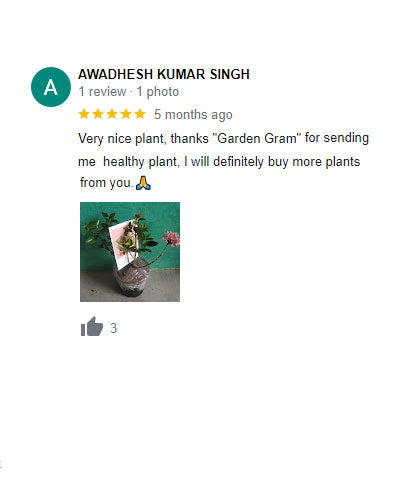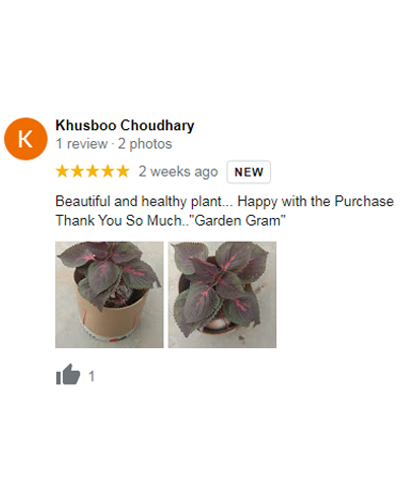Hanging Plants: A Beautiful Way to Save Space
Welcome to the lush world of hanging plants! In this article, we’ll explore the myriad benefits and irresistible appeal of these green wonders while providing insights into how they can transform any space. Get ready to delve into the vibrant universe of hanging plants and discover their magic.
The Space-Saving Appeal
In today’s compact living spaces, the challenge of limited room often restricts our green ambitions. However, hanging plants swoop in as the ultimate solution. They ingeniously utilize vertical space, adorning areas that traditional potted plants can’t reach. From cozy studio apartments to bustling office corners, hanging plants thrive and infuse life into any environment.
Choosing the Right Plants
Choosing the right plants for your hanging garden is a crucial step toward creating a thriving and visually stunning green space. It's a decision that involves a blend of personal preferences, environmental considerations, and understanding the specific needs of various plant species. Let's dive deeper into this aspect to guide you through the process of selecting the perfect plants for your hanging display.
1. Understanding Plant Needs: Before making any choices, it's vital to grasp the requirements of different plants. Some thrive in bright, indirect sunlight, while others prefer low-light conditions. Consider the humidity levels your plants need to flourish. This knowledge forms the foundation of a successful hanging garden.
2. Low-Maintenance Options for Beginners: For those starting their hanging plant journey, opting for low-maintenance plants is a wise move. Species like Pothos, Spider Plants, or Heartleaf Philodendron are resilient, forgiving of occasional neglect, and perfect for beginners.
3. Best Plants Suited for Indoor Hanging: Indoor spaces often have specific conditions that differ from outdoor environments. Look for plants adapted to thrive indoors, such as the Spider Plant, Boston Fern, or Peace Lily. These not only beautify your space but also contribute to better indoor air quality.
4. Factors to Consider: Beyond lighting and humidity, other factors influence plant health. Consider the size of your space—some plants have trailing vines that can beautifully drape down, while others grow in more compact clusters. Factor in growth speed and pruning requirements too.
5. Tailoring Choices to Your Lifestyle: Assess your lifestyle and the time you can devote to plant care. If you're often away or have a busy schedule, opt for hardy plants that don't demand constant attention.
6. Incorporating Diversity: Create an engaging visual landscape by mixing different types of plants. Combine trailing vines with more upright growers to add depth and variety to your hanging garden. Experiment with textures, leaf shapes, and colors to craft a visually appealing ensemble.
7. Research and Experimentation: Embrace the process of research and experimentation. Explore plant varieties that pique your interest and align with your space. Consider starting with a few different plants to gauge their adaptability and how well they fit into your care routine.
8. Assessing Available Space: Assess the available space and the specific areas where you intend to hang your plants. Some areas might receive more natural light or have better humidity levels, catering to specific plant needs.
9. Considering Long-Term Growth: Anticipate the long-term growth of your chosen plants. Some species might start small but grow rapidly, requiring more space or different care as they mature. Plan for their future needs to ensure sustained health and aesthetic appeal.
10. Seeking Expert Advice: Don't hesitate to seek advice from local nurseries or gardening communities. Their expertise can provide invaluable insights into plant selection based on your location's climate and environmental conditions.
Selecting the right plants for your hanging garden involves a thoughtful blend of aesthetics, care requirements, and your individual lifestyle. By understanding plant needs and considering various factors, you'll curate a vibrant and flourishing green haven that complements your space while elevating its charm.
Benefits Beyond Aesthetics
Beyond their aesthetic allure, hanging plants offer a myriad of remarkable benefits that transcend mere visual appeal. Let's explore these incredible advantages that make hanging plants more than just decorative elements:
1. Improved Indoor Air Quality: Hanging plants act as natural air purifiers, filtering out toxins and pollutants present indoors. Through photosynthesis, they absorb carbon dioxide and release oxygen, creating a fresher, healthier atmosphere. Certain species, like the Snake Plant and Spider Plant, excel in removing common indoor pollutants such as formaldehyde and benzene.
2. Mental Health Benefits: Engaging with nature, even indoors, has proven mental health benefits. The presence of greenery can reduce stress, anxiety, and even improve mood. Taking care of plants promotes mindfulness and provides a calming effect, fostering a sense of well-being.
3. Stress Reduction and Relaxation: The serene presence of hanging plants can significantly reduce stress levels. The sight of lush greenery and the act of nurturing plants can induce a sense of relaxation, creating a tranquil environment that encourages unwinding after a hectic day.
4. Enhanced Productivity and Creativity: Studies suggest that having plants in workspaces or study areas can enhance productivity and creativity. The calming effect of greenery aids in concentration and focus, ultimately boosting cognitive function.
5. Humidifying Effect: Some hanging plants contribute to increasing humidity levels indoors, which can be beneficial, especially in dry climates or during winter months. Plants like Ferns and Peace Lilies release moisture, helping maintain a more comfortable and healthier indoor environment.
6. Temperature Regulation: Plants can have a subtle cooling effect in their surroundings through transpiration, where they release water vapor. While not a substitute for air conditioning, they contribute to a slightly cooler environment, especially in smaller spaces.
The benefits of hanging plants extend far beyond their ornamental value, offering a wealth of advantages that enrich our lives physically, mentally, and emotionally. Incorporating these green companions into our spaces not only beautifies but also nurtures and enhances our overall well-being.
Seasonal Considerations
Be attuned to seasonal changes and adjust your care routine accordingly. Winter demands extra care for indoor hanging plants due to dry indoor environments, while summer calls for precautionary measures to shield them from excessive heat.
Frequently Asked Questions (FAQ):
1. What plants are good to hang in windows?
Plants that thrive in indirect sunlight are ideal for hanging in windows. Consider options like Spider Plants, Pothos, or String of Pearls. These plants tolerate varying light conditions and add a delightful touch to window spaces without requiring direct sunlight.
2. What plants work in hanging baskets?
Many trailing and cascading plants work wonderfully in hanging baskets. Some popular choices include Ivy, Ferns, Begonias, and Petunias. These plants not only tolerate being suspended but also trail beautifully, adding a graceful touch to any basket.
3. What hanging plants last the longest?
Certain varieties of succulents and cacti tend to last the longest in hanging baskets due to their resilience and ability to store water. Burro's Tail (Sedum morganianum) and String of Bananas (Senecio radicans) are examples of durable hanging plants that can thrive for extended periods.
4. How often should you water hanging plants?
The frequency of watering hanging plants depends on various factors such as plant type, environmental conditions, and potting medium. As a general guideline, check the soil moisture regularly. Water when the top inch of soil feels dry. Typically, this might range from once a week to every few days, but it varies for different plants.
5. What is the best fertilizer for hanging plants?
The ideal fertilizer for hanging plants provides balanced nutrition to support their growth and health. One recommended option is Dr. Health Plant Fertilizer enriched with Nitrogen, Phosphorus, and Potassium (NPK 10:10:10) is a fantastic choice. This fertilizer boosts healthy growth, increasing foliage quality, and activating enzymes for robust plant development. With a recommended dosage of 10-15 gms per plant every 15 days, it also contains essential elements like copper, iron, and carbon, enhancing plant immunity and resistance to pests. Moreover, being 100% natural, it's safe and effective for all plant varieties.
The enchanting world of hanging plants offers a plethora of benefits and aesthetic delights. Start your hanging plant journey today and watch as these verdant companions transform your space into a thriving oasis. Share your experiences and join the vibrant community of hanging plant enthusiasts as we collectively embrace the beauty and functionality they bring into our lives.













